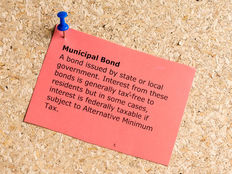
The $3.7 trillion municipal bond market may be dominated by institutional investors, but that doesn’t mean individual investors should completely ignore the market. The tax-advantaged nature of muni bonds makes them attractive for high net worth individuals, while low interest rates have made bonds attractive on a capital gains basis. In fact, the iShares National Muni Bond ETF (MUB) has seen nearly $1.4 billion in inflows from January to August 2016.
Exchange-traded funds (ETFs) may be the most popular way for individual investors to gain exposure to muni bonds, but closed-end funds (CEFs) may present the best value. In this article, we will take a closer look at CEFs and why they might be an attractive bargain.
What Are Muni CEFs?
Closed-end funds issue a fixed number of non-redeemable shares and use the proceeds to invest in assets. Unlike open-end funds (like mutual funds), CEFs do not issue new shares to meet investor demand and are non-redeemable, which means they often trade at a premium or discount to their fair value. The fair value of a CEF is called its net asset value (NAV), while the market value is known as the market capitalization.
Many CEFs are focused on investing in the municipal bond market. Since fund managers aren’t limited by investor appetite and fund flows, they can focus on finding the best opportunities to buy and sell assets. Open-end funds must also buy and sell assets from their portfolios to meet redemptions, whereas CEFs aren’t bound by these rules and, therefore, may be able to better take advantage of illiquid assets like muni bonds by avoiding wide bid/ask spreads.
Muni CEF portfolios tend to vary quite a bit between funds, given the high level of flexibility that fund managers have in building them. For instance, some funds may focus on national AMT-free muni bonds that have high investment grades, while others may focus on niche opportunities that are junk-rated and isolated to troubled states or territories. Investors should carefully consider these factors when evaluating fund options.
Buying CEFs at a Discount
Many closed-end funds trade at a discount to their net asset value, which creates an opportunity for investors to profit. In the municipal bond space, CEFs that trade at a discount to NAV provide so-called yield enhancements that produce above-average income. A muni CEF that pays a 5% distribution at NAV and trades at a 10% discount would have a yield enhancement of more than 50 basis points.
In addition to their yield enhancements, many muni CEFs use leverage to bolster their yield paid to investors. A leveraged muni CEF may offer a 5% yield, whereas unleveraged muni CEFs may offer just 3% – a significant difference for income investors. Surprisingly, some studies have found that the risk-adjusted returns from leveraged muni CEFs have been higher than their unleveraged open-end counterparts due to the positive slope of the muni yield curve.
Investors should keep in mind that there are some risks involved with purchasing muni CEFs compared to unleveraged open-end funds. Since they benefit from a positive sloping yield curve, CEFs are more exposed to short-term interest rate risks, which is particularly acute given the Federal Reserve’s increasing likelihood of hiking rates. The use of leverage also makes CEFs a lot more volatile than their open-end counterparts.
The Bottom Line
Municipal bond closed-end funds represent a compelling opportunity for investors to increase yields, but there are many important risks to consider. In general, investors should seek out funds that are capable of maintaining their yields and have an attractive z-score, which measures how many standard deviations a fund’s discount/premium is from its three-year average discount/premium. Muni CEFs with a z-score of -2 or lower may be worth considering.






